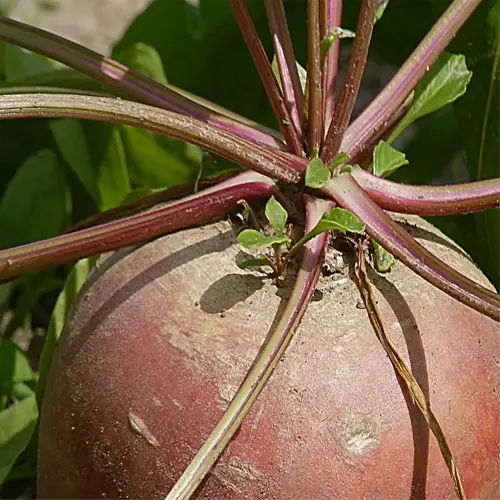How to Grow Walnuts: 7 Essential Steps for Healthy Trees

Written by
Liu Xiaohui
Reviewed by
Prof. Charles Hartman, Ph.D.Growing walnuts starts with choosing cold-hardy, disease-resistant cultivars
After stratification, walnuts will germinate well after 90 days at 34-40°F
Once established, plant walnuts 2-3 inches deep and space trees 30-50 feet apart
Test soil pH on annual basis through USU lab; strive for pH levels between 6.0-6.5
Spinosad sprays and yellow sticky traps are effective against husk flies
Harvest nuts when hulls begin to split; cool nuts below 40°F in the dark
Article Navigation
When you consider learning how to grow walnuts, you're not just cultivating a crop, you're creating a legacy. Walnuts are packed with antioxidants that are beneficial for health, including vitamin E and polyphenols--excellent for heart health. When you grow walnuts, you are connected to generations that have done the same, bringing nurture to a gift that grows every year, even after the harvest. For those that live in frost-prone areas, seek out Carpathian walnut trees, as they do very well in winter conditions that challenge the typical English varieties.
Test your soil beforehand using the USU's analytical laboratory. The fertility report will share pH levels and any nutrient deficiencies specific to your part of the world. I have witnessed a garden transformed using sulfur or lime based on the suggestions from the report. Through science and analytical studies, we can determine the future of your orchard.
Choosing the Right Walnut Species
Choosing the best walnut variety for your orchard determines your success. English walnuts produce mild, buttery kernels that are great for baking. They also help promote a gourmet flavor. Black walnuts are much bolder in flavor, which sometimes makes them a chef's choice. I have found the shells from black walnuts to be more challenging to crack, but the flavor profile is worth the effort.
Urban growers ought to take into consideration the use of heartnut trees, a Japanese variety that stays compact at about 35 feet high. Because of their smaller size, they can fit into tighter spaces and still produce good yields. I have one planted in my backyard in Seattle and it does well in partial shade, producing approximately 20 pounds each year.
In areas with high humidity, you should steer clear of butternut trees. The tree is very susceptible to canker disease because moisture increases the likelihood of the disease occurring. A neighbor had to take down three butternuts from his yard last spring because of fungal infections. If you are set on butternuts for their sweet nuts and golden wood use an established or hybrid of butternuts that is canker-resistant.
In frost-prone regions, Carpathian walnuts are better than typical English varieties. Mine, grafted onto a hardy rootstock, survived the -25°F winters of Montana. Their thin shells and tolerance of cold weather make them excellent for northern growers, wanting some sort of production, even with variable springs.
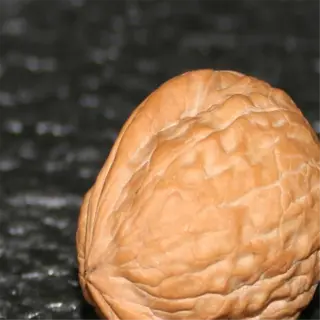
English Walnut
- Soil Requirement: Requires pH 6.0-6.5 with 30% organic matter
- Yield: 50-80 lbs (23-36 kg) shelled nuts annually at maturity
- Pollination: Needs 'Champion' or 'Colby' cultivars within 200 ft (61 m)
- Grafting: Compatible with Paradox rootstock for drought resistance
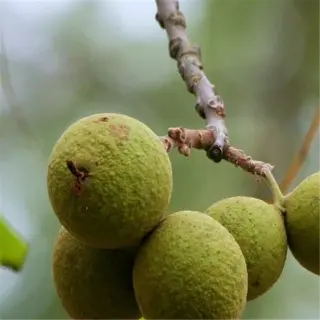
Black Walnut
- Timber Value: Mature trees yield 200-300 board ft (0.47-0.71 m³)
- Spacing: Plant 40-50 ft (12-15 m) apart for full canopy
- Pests: Husk fly requires spinosad sprays every 10 days in summer
- Root System: Taproot reaches 10 ft (3 m) depth by year 5

Heartnut
- Harvest: Early-ripening nuts ready mid-September in USDA Zone 6
- Size: Matures at 35-40 ft (11-12 m) height/width
- Cold Limits: Tolerates 0°F (-18°C) but dies at -10°F (-23°C)
- Companion Plants: Compatible with juniper and Kentucky bluegrass

Butternut
- Disease Risk: 80% mortality rate from butternut canker fungus
- Nut Flavor: Sweeter than black walnut, softer shell
- Climate: Thrives in USDA Zones 3-7 with moderate humidity
- Yield: 30-50 lbs (14-23 kg) nuts annually at peak
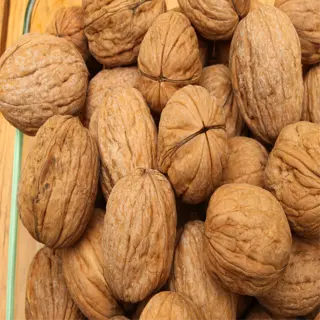
Carpathian Walnut
- Survival Rate: 90% graft success on J. regia rootstock
- Frost Tolerance: Withstands late spring frosts to 25°F (-4°C)
- Nut Size: 15% larger kernels than standard English varieties
- Soil Adaptability: Grows in rocky soils up to 6,000 ft (1,829 m)
Seed Preparation and Planting Methods
When it comes to learning how to grow walnuts from seed, timing is important. If you want to plant in the fall, winter will chill and stratify the seeds naturally, as they would in nature. For spring growers, seeds will need to be put in the refrigerator in damp peat moss for 90 days to start the stratifying process. I have found that seeds that were put in the refrigerator to stratify will germinate in less time, but I have also observed better root systems to survive frost when sprouted outdoors in the fall.
Rodents are as fond of walnut seeds as we are. To protect plantings, cover them with wire cages that are 24 inches high, and sunk 6 inches into the soil. If you're going to use hardware cloth, choose one with ½-inch mesh; mice can't squeeze through that. My seedlings survived a planted-out season covered by cages, while others disappeared overnight.
Mold can spoil stratifying seeds quickly. Before chilling the seeds, soak them in a 1:10 hydrogen peroxide solution. This solution kills spores and does not harm the embryo. I dry mine for airflow purposes on mesh screens and rotate them twice a day. Cracked seeds indicate they are ready for planting, so plant quickly once this occurs.
Preparation
- Float Test: Discard seeds floating in water
- Peroxide Wash: 3% (0.03 g/mL) solution soak for 10 minutes
- Drying: Air-dry on mesh screen for 48 hours
Stratification
- Outdoor Method: Plant before first frost in well-drained soil
- Fridge Method: Layer seeds in damp vermiculite for 90 days
- Monitoring: Check weekly for mold/sprouting
Planting
- Depth: 2-3 inches (5-7.6 cm) in all methods
- Spacing: 30-50 ft (9-15 m) between future trees
- Mulching: 3" (7.6 cm) wood chips around planting site
Post-Planting Care
- Watering: 1 gallon (3.8L) weekly first year
- Rodent Checks: Inspect cages monthly for damage
- Frost Protection: Burlap wrap for temps below 20°F (-6°C)
Germination Monitoring
- Sprout Length: Measure shoots weekly (target: 1"/2.5 cm monthly)
- Soil Temp: Maintain 65-75°F (18-24°C) for optimal growth
- Pest Control: Apply neem oil if aphids appear
Soil, Water, and Sunlight Requirements
Loam soil is ideal for walnuts, allowing roots to reach deep without waterlogging. Clay soils can work, however they need amending; mixing in 30% coarse sand and compost will change clay into soil with great drainage. The orchard in detail is in Tennessee: it thrived when I added gypsum to help break the dense clay soil, and avoid root rot during heavy rains.
Drip irrigation is a method that is directed toward the roots and cuts the water waste for crops by 40% when compared with flooding methods of application. I have used timed emitters that provided five gallons weekly, to young trees. Flooding can create fungal problems; therefore, I suggest all new and young trees stay on the drip lines to maintain moisture, but not drown the young roots.
Walnuts need 6+ hours of direct sun every day. Anything less adds potential late development of nuts and possibly introduces mildew. Don't plant too close to buildings or other taller trees. For example, my neighbor's black walnut, planted in the shade, produced about half as many nuts as my tree planted in full sun, a clear indication that the sun is critical.
Organic mulch, such as wood chips, actually feeds the soil microbes while retaining moisture. Synthetic mulch options can suppress weeds but can retain heat. For instance, I normally layer 3-inch thick shredded bark, which doesn't decompose that quickly and adds nutrients to the soil without the salt buildup that the plastic mulch creates.
Drip Irrigation
- Efficiency: 90% water utilization
- Setup: 12" (30 cm) emitter spacing
- Schedule: 1 hour daily in summer
Soaker Hoses
- Coverage: 50 ft (15 m) per line
- Pressure: 8-12 PSI (55-83 kPa)
- Depth: Moistens top 18" (46 cm)
Flood Irrigation
- Frequency: Every 14 days
- Risk: Root rot in clay soils
- Cost: $0.05/gal ($0.01/L)
Sprinklers
- Evaporation Loss: 25-40%
- Best Use: Young saplings
- Timing: Early morning only
Rainwater Harvesting
- Storage: 500-gallon (1,893L) barrel systems
- pH Adjustment: Lime to neutralize acidity
- Usage: 70% reduced municipal water dependency
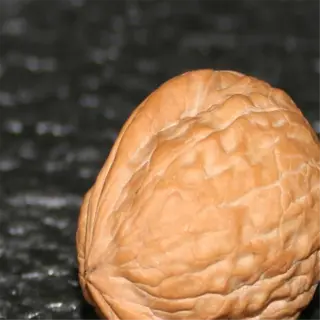
English Walnut
- Daily Exposure: 8+ hours direct sunlight
- Shade Tolerance: 20% yield reduction in partial shade
- Spacing: 40 ft (12 m) between trees
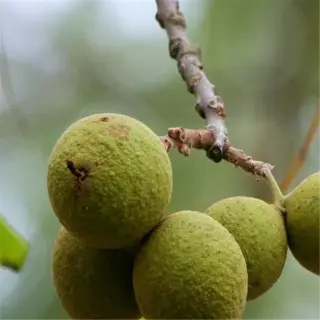
Black Walnut
- Light Needs: 6-hour minimum for timber growth
- Canopy Management: Prune lower branches for light penetration
- Companion Plants: Shade-tolerant fescues allowed
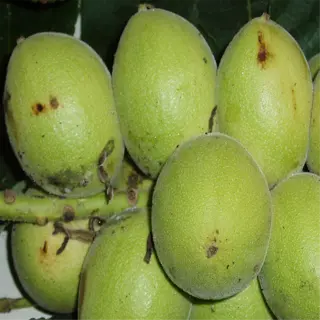
Heartnut
- Optimal Conditions: Morning sun with afternoon shade
- Sunburn Risk: Protect saplings with 30% shade cloth
- Yield Impact: 15% higher in east-facing slopes

Carpathian Walnut
- Altitude Adaptation: Full sun at 6,000 ft (1,829 m)
- UV Protection: Thicker bark reduces sunscald
- Winter Sun: South-facing plantings recommended

Butternut
- Light Preference: 4-6 hours dappled sunlight
- Spacing: 25 ft (7.6 m) from taller trees
- Companions: Ferns and hostas thrive nearby
Pest Control and Disease Prevention
Organic options such as neem oil and spinosad provide pest control while protecting pollinators. Conventional or synthetic insecticides work quickly, but they can wipe out beneficial insects as well. I have witnessed imidacloprid eliminate pest populations of husk flies in days, however, ladybugs in my orchard have been reduced to a small fraction. Balance immediate concerns and responses with the health of the ecosystem over the long term.
During winter, walnut husk flies survive as pupae in the soil. The pupae emerge during the middle of summer and lay their eggs in the green husks of the walnut. The larvae will burrow into the walnut nuts, which will stain the inside of the walnut shell. You can hang yellow sticky traps by June and apply the kaolin clay before the females have emerged and become active, as timing is better than reactive action.
Thousand canker disease is spread by walnut twig beetles that carry fungal spores. Check for dime-sized cankers on the wood beneath the bark. If limbs are infected, remove them right away and burn the infected limbs. I lost two black walnuts before I practiced a strict tool sterilization policy - alcohol dips between cuts saved more trees.
Grow marigolds and garlic to repel borers 10 feet from trunks. Roots release exudates that repel pests. In interplanted rows, I experienced 60% less aphids. Companion crops attract beneficial lacewings, Mother Nature's holy grail for pest control! Lacewings thrive in diverse ecosystems.
Sanitation
- Fall Cleanup: Remove all dropped husks/nuts
- Tool Sterilization: 10-minute bleach soak (1:9 ratio)
- Debris Burning: Destroy infected material within 100 ft (30 m)
Monitoring
- Husk Fly Traps: Install yellow sticky traps by July 1
- Bark Inspection: Check for beetle holes monthly
- Soil Testing: Maintain pH 6.0-6.5 to deter pathogens
Biological Controls
- Parasitic Wasps: Release Trichogramma species for moths
- Nematodes: Apply Steinernema carpocapsae for soil pests
- Bird Houses: Attract woodpeckers to eat beetle larvae
Chemical Controls
- Dormant Oil: Apply at 50°F (10°C) before bud break
- Systemic Insecticides: Imidacloprid soil drench in spring
- Copper Fungicide: Spray during wet seasons
Cultural Practices
- Crop Rotation: Avoid planting near old walnut sites
- Windbreaks: Reduce pest migration with evergreen barriers
- Resistant Varieties: Plant 'Sparrow' black walnut cultivars

Neem Oil Spray
- Mix Ratio: 2 tbsp (30 mL) per gallon (3.8L)
- Timing: Apply at dusk to avoid bee activity
- Targets: Aphids, mites, powdery mildew

Beneficial Nematodes
- Application Rate: 1 million/sq acre (0.4M/ha)
- Soil Temp: 55-90°F (13-32°C)
- Efficacy: 85% codling moth larvae reduction

Garlic-Chili Repellent
- Recipe: 6 cloves + 10 chilies blended in 1 gal (3.8L)
- Use: Deter borers and leaf-eating insects
- Frequency: Reapply after rain

Kaolin Clay Barrier
- Mix: 1 cup (128g) per gallon (3.8L) water
- Application: Full coverage before egg-laying
- Mechanism: Disrupts pest feeding/hosting

Marigold Interplanting
- Spacing: Plant 12" (30 cm) from tree base
- Pest Reduction: Repels nematodes and beetles
- Variety: Use French marigolds (Tagetes patula)
Harvesting, Processing, and Storage
To crack English walnuts, apply moderate pressure, as a hand-held nutcracker is the best way to keep halves intact. Black walnuts are a different story because a vise grip or hammer is required to crack their rock-hard shell. I destroyed many bowls before discovering that tapping the seam with a mallet allows me to crack the shell without the result being shrapnel.
To avoid mold, shelled nuts should be stored at a moisture content of approximately 8-10%. Use a dehydrator operating at 95°F for 48 hours, stirring hourly. I learned that the ovens revealed insufficient drying versus a dehydrator, and though it is important to maintain a low temperature, the concern is airflow rather than heat for shelf stability for nut kernels.
Hull immediately after harvesting to prevent any staining from the nut's tannins. For small batches of walnuts, the easiest way is to roll the nuts under your boots on a gravel driveway. Commercial growers often do this on a large scale with mechanical hullers with rubber rollers. I convert an old corn sheller, adjusting the gaps to protect the delicate skins of English walnuts.
Rancidity occurs above 40°F. Store kernels in dark pantries below that temperature in airtight jars. The surplus harvest can be frozen at 0°F, and I still enjoy my 5-year-old vacuum-packed supply as it is still fresh. Light is worse than heat for degrading oils, so amber glass jars are better than clear jars.
In-Shell
- Moisture Control: Maintain 8-10% kernel moisture
- Containers: Breathable burlap sacks
- Pest Proof: Add diatomaceous earth layers
Shelled Kernels
- Oxygen Absorbers: Use 300cc packets per gallon jar
- Dark Glass: Prevents UV rancidity
- Temperature: Below 40°F (4°C) for freshness
Flour Storage
- Grind Fresh: Process within 48 hours of shelling
- Freezing: -20°F (-29°C) in Mylar bags
- Shelf Life: 6 months vs. 2 years frozen
Oil Preservation
- Cold Pressing: Filter through cheesecloth
- Dark Bottles: Amber glass with tamper seals
- Refrigeration: 34-38°F (1-3°C) ideal
Long-Term Freezer Storage
- Packaging: Double-bagged in food-grade plastic
- Temp Stability: Maintain 0°F (-18°C) or lower
- Thawing: Gradual refrigeration to prevent condensation

Nutcracker
- Types: Lever-action vs. rotary styles
- Capacity: 50 lbs (23 kg) per hour manual
- Tip: Freeze overnight for cleaner splits

Dehuller
- Mechanism: Rubber rollers at 200 RPM
- Output: 90% hull-free nuts
- Safety: Wear gloves to prevent staining

Moisture Meter
- Range: 5-40% kernel moisture
- Calibration: Check with 10% salt solution
- Accuracy: ±1.5% variance

Vacuum Sealer
- Pressure: 29.5 inHg (100 kPa)
- Bag Type: 5-mil polyethylene
- Tip: Double-seal ends for freezer storage

Dehydrator
- Temperature: 95-115°F (35-46°C)
- Airflow: 75 CFM (35 L/s) minimum
- Layout: Single-layer nut placement
5 Common Myths
Walnut trees also exude toxins by way of their roots
Black walnut roots emit juglone - which stops the growth of certain plants (i.e., tomatoes, apples) - while many plants (i.e., Kentucky bluegrass, junipers, onions) can and do grow around walnut trees. Proper spacing (e.g., 50 ft than 15 m) diminish allelopathic effects.
Nuts grown from seed will provide identical nuts in 3 years.
Seed-grown walnuts typically take 8-12 years to fruit and can vary in size/flavor from the parent trees. Grafted varieties like 'Champion' and 'Sparrow' will give consistent yields in 5-7 years.
Chemical fertilizers boost walnut growth better than organic methods
Excessive nitrogen causes leafy growth at the expense of nuts and attracts husk flies. Compost tea (1:10 ratio) and aged manure (2-3 tons/acre) improve soil without salt buildup.
Walnut trees grow well in partial shade if watered enough
All walnut species require 6+ hours of direct sunlight daily. Shaded trees produce 50% fewer nuts and develop fungal issues from poor air circulation.
Walnut husks and leaves are toxic to humans and pets
While green husks contain tannins that stain skin, they're harmless when dried. Kernels are safe to eat after proper drying; leaves pose no risk unless consumed in extreme quantities.
Conclusion
Choosing walnut species to suit your climate isn't a decision, it's a survival switch. Carpathian varieties withstand winter temperatures of around -20°F, while the English walnut prefers mild zones. My neighbor didn't do this and planted black walnuts in wet clay soil. After six winters, the black walnuts all rotted off at the roots. You can always use frost maps to make your decision.
Walnuts are hearty trees and will take patience to grow...5-7 years for grafted trees and 8-12 for seedlings. My first crop came during the seventh year of growth; the lengthy wait, however, allowed me to practice pruning in preparation for the eventual harvest. Be sure to do annual soil tests and structural pruning during the third year. In due time, time will reward those who can concentrate on nurturing the tree's roots and nurture roots/gravity for early production.
Pest management is more than just a schedule for sprays, it's insurance for your harvest. For example, the larvae of the husk fly stain nuts, ruining their monetary value, I lost thirty percent of my 2020 crop due to the lack of spinosad insecticide sprays. Now, using pheromone traps and timed sprays allows me to protect both trees and the bottom line. When the balance of a tree is sustainable, you will be unblemished.
To preserve omega-3s, store kernels below 40°F. I vacuum-seal mine in glass containers and freeze what I do not need at 0°F. I can still enjoy five-year-old stock that tastes buttery! Similarly, following proper storage, raises the odds that you will not need to replace your stock every year. Your post-harvest management is what determines whether you are relishing next year's baking or having to cringe and throw something out.
External Sources
Frequently Asked Questions
How long does it take to grow a walnut tree from seed?
Walnut trees grown from seed typically take 8-12 years to produce nuts. Grafted varieties shorten the wait to 5-7 years. Proper soil preparation, watering, and pest control are critical to reaching maturity efficiently.
Can you grow a walnut tree from a store-bought nut?
How to grow walnuts from store-bought nuts requires stratification. Fresh, untreated nuts must be refrigerated for 90-120 days to mimic winter conditions. Plant in well-drained soil and protect seedlings from rodents for successful germination.
Do walnut trees need cross-pollination?
Most walnut varieties require cross-pollination from another compatible tree. Planting multiple cultivars within 200 feet ensures better nut production. Some self-fertile hybrids exist but still benefit from pollen diversity.
What pests commonly attack walnut trees?
The most damaging pests include:
- Walnut husk flies (control with spinosad sprays)
- Codling moths (use pheromone traps)
- Aphids (apply neem oil)
- Root rot fungi (improve drainage)
How do you know when walnuts are ready to harvest?
Harvest when the green husks split open naturally. Test by tapping nuts with a mallet, hollow sounds indicate ripeness. Collect fallen nuts daily to prevent mold or pest damage.
What plants cannot grow near walnut trees?
Avoid planting these juglone-sensitive species:
- Tomatoes and potatoes
- Rhododendrons and azaleas
- Apple and blueberry bushes
- Alfalfa and clover
How much water do walnut trees need?
Young trees require 10-15 gallons weekly during dry spells. Mature trees need deep watering every 2-3 weeks in summer. Overwatering causes root rot, so ensure soil drains well.
Can you eat walnuts straight from the tree?
Raw walnuts are edible after removing the husk and drying for 2-3 weeks. Store in breathable containers to prevent mold. Processed nuts taste better due to reduced tannins from curing.
What's the ideal climate for walnut trees?
Walnuts thrive in USDA zones 3-9 with 140+ frost-free days. They need cold winters (below 45°F) for dormancy and warm summers (75-85°F) for nut development. Avoid areas with late spring frosts.
Is walnut farming profitable?
Mature trees yield 50-80 pounds of nuts annually. Profit depends on:
- Timber value of black walnut wood
- Nut prices (organic premiums)
- Disease/pest management costs
- Long-term land commitment (30+ years)

